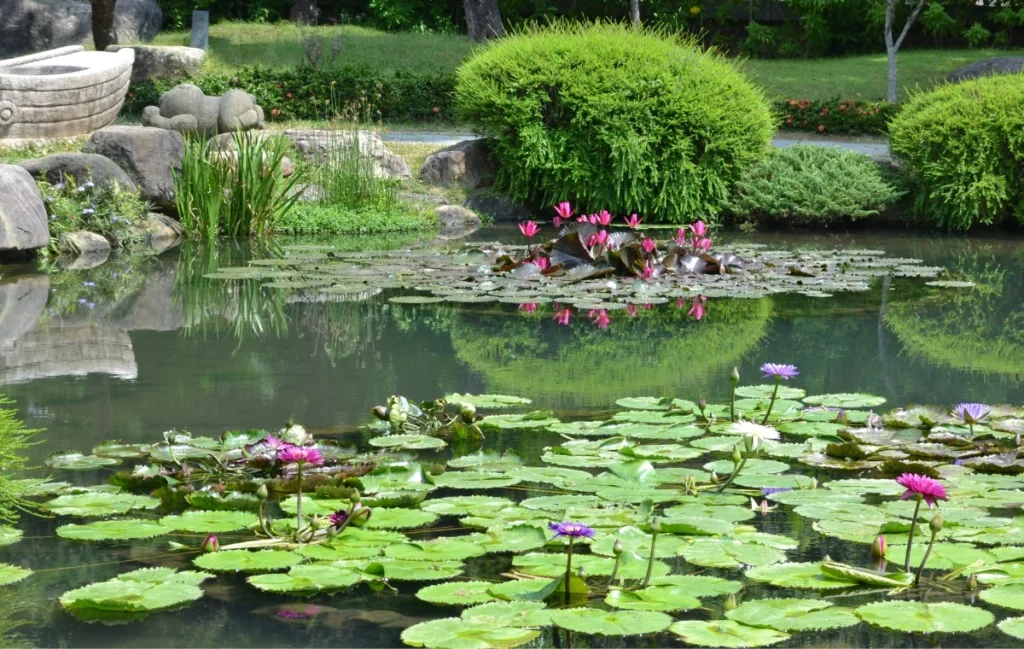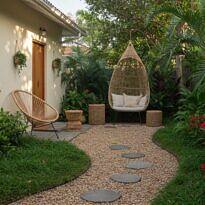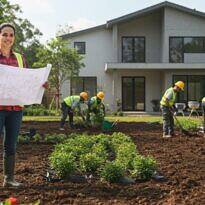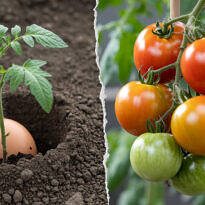But What Exactly is Sustainability?
Before we dive into the 26 Sustainable Landscaping Solutions, it’s important to first discuss what sustainability actually means. Does it only relate to the environment? Let’s reflect on this crucial concept together.
In an era of increasing environmental concerns, adopting sustainable practices has become an urgent necessity in all areas of life, including landscaping. But what exactly does sustainability mean? Simply put, sustainability refers to the responsible use of natural resources in a way that meets our current needs without compromising the ability of future generations to meet their own. This concept is essential in landscaping projects, which deal directly with soil, water, air, and plants — vital resources for maintaining ecosystem balance.
When it comes to sustainable landscaping, there are four fundamental pillars guiding this practice. First, the solutions must be environmentally friendly, aiming to minimize environmental impact. This includes choosing native plants, using water responsibly, and caring for biodiversity. Additionally, they must be economically viable, meaning that investment in sustainable projects should be affordable and offer long-term returns, either by conserving resources or increasing the value of the space.
Another key aspect is that these solutions should be socially fair. Sustainable landscaping projects have the potential to transform communities by creating green spaces that provide areas for social interaction, leisure, and well-being. These initiatives should benefit all layers of society, ensuring equal access without exclusion. Finally, sustainable landscaping should also respect and value cultural diversity, incorporating regional elements such as local plant species and addressing local needs and traditions.
The Importance of Sustainable Landscaping
Sustainable landscaping goes beyond mere environmental concern. It plays a crucial role in environmental preservation, contributing to the protection of local ecosystems. By incorporating techniques that promote biodiversity and reduce human impact on the environment, such as using native plants and design strategies that prevent water waste, gardens and green spaces become true sanctuaries for local wildlife and flora.
Moreover, one of the main benefits of this type of landscaping is resource efficiency. Techniques like rainwater harvesting and using species adapted to the local climate can create landscapes that require less irrigation, fertilization, and maintenance. This not only reduces costs but also limits excessive use of resources such as water and energy.
Another essential point is the positive impact on quality of life. Green spaces designed sustainably offer more than just aesthetic appeal — they directly influence the microclimate by providing shade, lowering ambient temperatures, and even helping to purify the air. These areas also promote social well-being, offering places for leisure, community interaction, and relaxation.
How can we bring Sustainability to our Gardens?
Throughout this article, we will explore 26 sustainable landscaping solutions, presenting practical and innovative ideas that can be applied to both residential projects and public spaces. Let’s dive into the details of these strategies, showing how each one contributes to a greener, more balanced future.
1. Native Plants
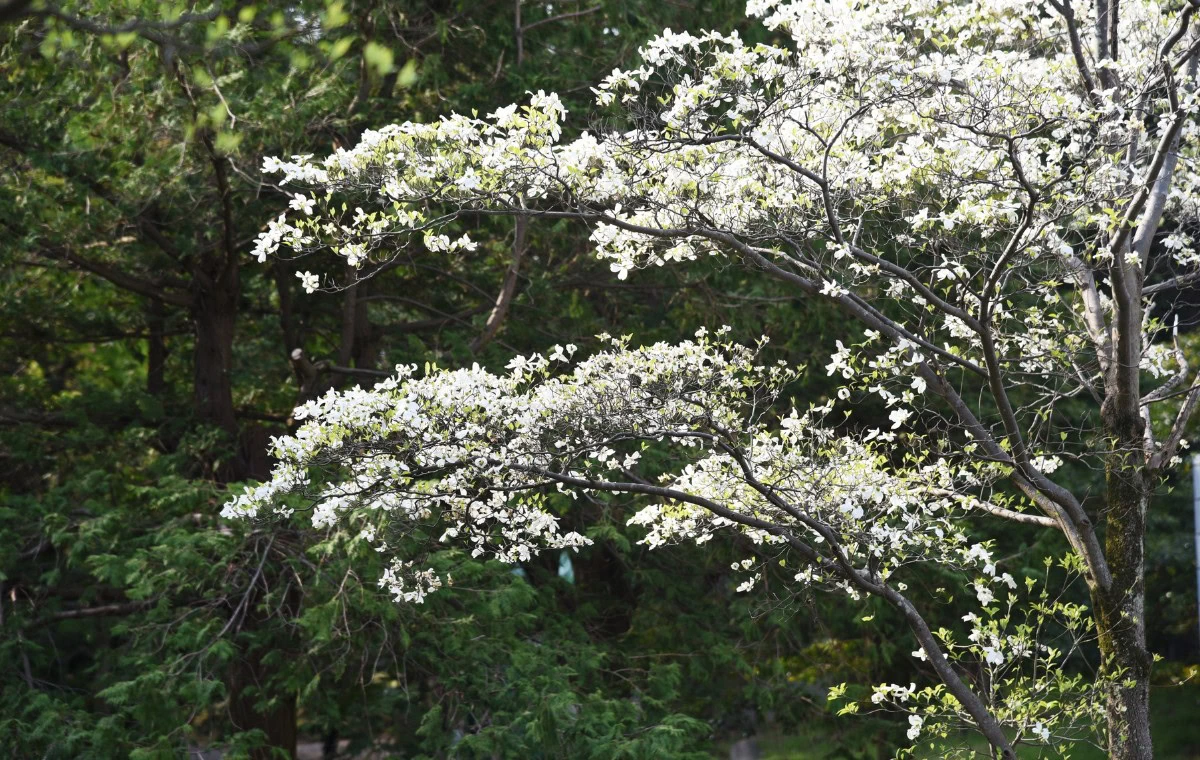
Using native plants is essential for sustainable landscaping, as they are adapted to the local climate and soil. They require less maintenance and resources, such as water and fertilizers, are more resistant to pests, and help promote biodiversity.
- Adapted to local climate and soil
- Low need for irrigation and fertilization
- Contribute to biodiversity conservation
- Lower risk of pests and diseases
2. Adapted Plants
Non-invasive exotic plants that have adapted can be used to diversify the landscape without harming the local ecosystem. They provide both aesthetic and functional variety, as long as they are carefully selected. Many are also culturally significant in certain regions, making their use sustainable.
- Select species that do not compete with native plants
- Low risk of becoming invasive
- Contribute to garden aesthetics and diversity
- May be culturally desired
- Require constant monitoring to control
3. Perennial Plants

Perennial plants are ideal for sustainable gardens as they live for many years and require less annual maintenance. They ensure stable landscaping, reducing the need for constant replanting.
- Long life cycle, living more than two years
- Less need for replanting and maintenance
- Save resources in the long term
- Provide stable structure to the garden
4. Tree Planting
Planting trees in landscaping projects promotes shade, improves air quality, and increases biodiversity. Trees are essential for mitigating the effects of urban heat islands.
- Provide shade and reduce ambient temperature
- Improve air quality by absorbing CO2
- Offer habitat for urban wildlife
- Increase water retention in the soil
5. Energy Efficiency

Energy efficiency in landscaping can be achieved by using LED bulbs, solar energy, and strategically positioning trees for shading. These practices reduce energy consumption and operational costs.
- Use LED bulbs for low-energy lighting
- Integrate solar panels for clean energy
- Strategic tree planting for shading
- Use plant screens, vertical gardens, and green roofs for thermal comfort and climate control savings
- Reduce long-term energy costs
6. Permeable and Light-Colored Paving

Permeable paving allows water to infiltrate the soil, helping to prevent floods and recharge the groundwater. Light-colored paving reflects more light, reducing heat absorption and the urban heat island effect.
- Promote water infiltration and reduce surface runoff
- Help recharge groundwater
- Light-colored paving reflects sunlight, reducing heat absorption
- Help mitigate urban heat islands
7. Green Roofs

Green roofs are vegetated coverings that reduce the internal temperature of buildings, improve thermal insulation, and contribute to rainwater management. They also create habitats for urban biodiversity.
- Improve thermal insulation of buildings
- Reduce internal temperature and energy consumption
- Absorb and filter rainwater, reducing runoff
- Provide habitat for urban wildlife
8. Vertical Garden

Vertical gardens are interesting solutions that make use of walls to create stunning green areas. They contribute to air quality improvement and offer additional thermal insulation to buildings.
- Maximize vertical space in limited areas
- Improve air quality by filtering pollutants
- Provide thermal insulation, reducing heating and cooling demands
- Should be irrigated by automated systems for water efficiency
9. Recycled Materials and Upcycling

Using recycled, repurposed, or even upcycled materials for fences, pathways, and other garden elements reduces the environmental footprint and promotes a circular economy.
- Reduce the consumption of new resources and waste generation
- Contribute to the circular economy by repurposing materials
- Allow for the creation of unique, personalized elements
- Can include pallets, tires, wood, glass, fabrics, etc.
10. Functional Garden

A functional garden mixes aromatic herbs, vegetables, non-conventional edible plants (PANC), and medicinal plants, creating a useful and sustainable space. This type of garden can offer both aesthetic and practical benefits by breaking the paradigm that vegetable gardens are separate from decorative gardens.
Home gardens provide fresh, organic food, reducing the need for transportation and the associated environmental impact. Moreover, they promote a connection with nature and can be grown in small spaces.
- Reduce the carbon footprint associated with food transport
- Provide access to fresh, organic food
- Can be implemented on balconies, patios, and small backyards
- Contribute to food security and well-being
11. Biodiverse Garden
Biodiverse gardens include a wide variety of species, increasing ecological resilience and promoting a balanced ecosystem. This diversity also attracts different types of wildlife, contributing to urban biodiversity.
- Increase garden resilience against pests and diseases
- Promote soil health and ecological sustainability
- Attract and support a wide range of wildlife, including pollinators
- Help preserve local and native species
12. Integration with Nature
Design gardens that harmonize not only with the architecture but also with the local landscape, softening the rigidity of constructions and taking advantage of the natural surroundings.
- Leverage the natural topography for a harmonious design
- Use local materials and natural elements for visual integration
- Respect and complement the existing architecture
- Improve the energy efficiency of buildings by utilizing the microclimate
13. Attract Wildlife and Pollinators

Use bird feeders and water stations to attract bees and butterflies to your garden by planting species that provide nectar, pollen, and shelter, contributing to urban biodiversity. Add extra interest to your projects by incorporating stingless bee hives or insect hotels. However, remember to advise clients on the care needed for these bees.
- Installation of feeders and water stations for birds and small (wild) animals
- Plant species that offer shelter, nectar, fruits, and seeds
- Installation of insect hotels to house pollinators
- Stingless bee hives for safe urban environments
- Butterfly Garden (Feeding caterpillars and adults)
14. Xeriscaping

Utilize drought-resistant plants, significantly reducing the need for irrigation. This practice is ideal for regions with limited water resources and aims for maximum water efficiency. However, attempting to create a xeriscape in areas with high rainfall may be unsustainable, with plants suffering from excess moisture, requiring constant aeration, weeding, and fungicide application.
- Use of plants adapted to dry climates and poor soils
- Reduced need for irrigation, conserving water
- Implementation of water conservation techniques, such as mulching
- Careful planning to minimize water-thirsty lawn areas
15. Water Conservation and Rainwater Harvesting

Rainwater harvesting is a sustainable practice that allows this water to be used for garden irrigation and other purposes, reducing dependence on potable water and lowering supply costs.
Install systems that reuse greywater (from sinks and showers) to irrigate green areas, saving potable water. Use materials that reduce or eliminate the need for cleaning. When using greywater, monitor water quality and plant response.
- Installation of gutters and reservoirs to collect rainwater
- Use of harvested water for irrigation and outdoor cleaning
- Reduction in potable water consumption and water bills
- Contributes to sustainable water resource management
- Reuse of greywater (from sinks, showers) for irrigation
16. Smart Irrigation

Contrary to what many may think, automatic and smart irrigation, which uses environmental sensors and is well-designed and programmed, reduces water consumption and garden maintenance costs.
- Moisture sensors continuously monitor the soil
- Automated systems adjust irrigation as needed
- Reduction in water waste and optimized consumption
- Contributes to plant health and water efficiency
- Implementation of drip irrigation systems that reduce evaporation and drift loss
17. Water Elements in the Garden

The addition of water elements, such as fountains, natural pools, and ponds, not only enhances the garden’s aesthetics but also helps regulate evapotranspiration. They create pleasant microclimates and attract wildlife.
- Installation of fountains or ponds to create cool microclimates
- Help increase local humidity through evapotranspiration
- Attract wildlife, such as birds and aquatic insects
- Improve thermal comfort in adjacent areas
18. Erosion Control
Controlling erosion in the garden is essential to maintain soil integrity and prevent landslides. Practices such as the use of ground covers and sustainable landscaping techniques help stabilize the soil.
- Planting ground covers to protect the soil
- Implementation of natural barriers such as green retaining walls
- Use of landscaping techniques to stabilize the terrain
- Prevention of landslides and protection against erosion
19. Composting

Transforming organic waste into compost to fertilize the garden is a sustainable practice that reduces waste volume, lowers fertilizer costs, and nurtures the soil.
- Controlled decomposition process of organic waste
- Produces nutrient-rich compost for the soil
- Reduces the need for chemical fertilizers
- Contributes to waste reduction and garden sustainability
20. Organic Fertilization
Organic fertilization is a sustainable practice that uses natural compounds to enrich the soil, avoiding synthetic fertilizers. This improves soil and plant health, promoting healthy growth. Soil is the foundation of any sustainable landscaping. Healthy soils promote vigorous plants and a balanced ecosystem.
- Implementation of permaculture techniques
- Use of organic fertilizers to improve soil fertility
- Rebalancing and transition to an organic garden
- Use of substrates, conditioners, and organic compounds such as manure, compost, and humus
- Improves soil structure and fertility
- Reduces the need for chemical fertilizers
- Promotes healthy, balanced plant growth
21. Mulching

Mulching helps retain soil moisture, suppress weeds, and improve soil fertility as it decomposes. This simple technique is essential for sustainability in gardens of any size.
- Application of organic materials, such as pine bark or wood shavings
- Reduces evaporation and maintains soil moisture
- Suppresses weeds and protects against erosion
- Improves soil fertility as it naturally decomposes
22. Reduce Pesticides
Reducing the use of pesticides in landscaping is crucial for the health of the soil, plants, and local fauna. Practices such as biological control and selecting pest-resistant plants help minimize the need for chemicals.
- Implementation of biological control to combat pests
- Selection of plants naturally resistant to pests
- Use of natural and organic pesticides when necessary
- Contributes to ecosystem diversity and balance
23. Rain Gardens

Rain gardens are designed to capture and infiltrate rainwater, helping reduce runoff and prevent flooding. These gardens not only manage water sustainably but also enrich the landscape.
- Designed to capture and infiltrate rainwater into the soil
- Reduces runoff and decreases the risk of flooding
- Use of plants that tolerate both flooding and drought
- Improves water quality by filtering pollutants
24. Lawn Alternatives

Alternatives to traditional lawns, such as ground covers, low-growing plants, or dry gardens, offer a sustainable option with less water and maintenance needs.
- Use of low-maintenance, water-efficient ground covers
- Implementation of rock gardens with drought-adapted plants
- Reduction in the need for irrigation and constant maintenance
- Promotes biodiversity
25. Local Suppliers
Choosing local suppliers for plants and landscaping materials reduces the carbon footprint associated with transportation and supports the local economy. Local products are also better adapted to the region’s climate and soil conditions.
- Reduces the carbon footprint of product transportation
- Supports the local economy and promotes economic sustainability
- Local suppliers offer products adapted to the region’s climate and soil
26. Integrated Planning

The integrated planning of landscaping with architecture from the beginning of the construction project ensures maximum efficiency and sustainability. This allows for the harmonization of natural and built elements, promoting a balanced and functional environment.
- Integration of landscaping with the architectural project from the start
- Improves energy efficiency and resource management
- Allows for aesthetic and functional harmonization of elements
- Facilitates the implementation of sustainable solutions from the outset
Throughout this article, we have explored 26 sustainable landscaping solutions, each demonstrating that it is possible to create beautiful and functional environments without compromising natural resources. These practices, ranging from the use of native and adapted plants to the adoption of smart irrigation systems and rainwater harvesting, not only promote environmental preservation but also offer long-term economic and social benefits.
Adopting sustainable landscaping is a powerful way to contribute to environmental preservation while improving quality of life in cities and enhancing local biodiversity. Each solution presented reinforces the importance of integrating our gardens and green spaces with the ecosystem, creating projects that respect the natural cycle of resources and reduce human impact on the planet.
The path to a more sustainable future begins with small actions. Whether implementing lawn alternatives, planting trees, or using recycled materials and composting techniques, every choice makes a difference. More than a trend, sustainable landscaping is a necessity, especially in a world where resources are increasingly scarce and environmental awareness is growing.
Now, as you look at your green space, ask yourself: which of these solutions can you implement to make your garden more sustainable?

